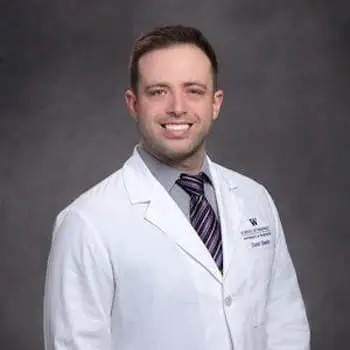PCP is a hallucinogenic and dissociative drug that alters one’s perception of reality. PCP use is dangerous and very addictive but treatment is available.
PCP is short for phencyclidine, a drug introduced in the mid-20th century for surgical anesthesia. At the time, there were not many anesthesia drugs available and it was popular because it did not affect breathing or blood pressure. However, the drug did not last long in medicine because it caused many adverse side effects.
Today, PCP is not produced legally for any medical purpose. However, people still illegally produce and misuse the highly addictive drug.
PCP rehab and PCP addiction treatment are important tools for treating abuse and addiction. Most states have PCP rehab centers with options for treatment, which can dramatically help people who are addicted to PCP detox and recover from their substance abuse disorder.
Treatment Can Be Life Changing. Reach out today.

PCP Addiction Treatment Options
PCP addiction treatment begins with accepting and recognizing that there is a problem. Whether someone recognizes addiction in themselves or another person, they should take steps to start treatment.
Addiction is a disease that leaves people stuck in a cycle of euphoria, crash and craving. They take PCP to feel good, followed by a crash. The crash is so uncomfortable that individuals find themselves craving the drug. The longer someone uses PCP, the worse the dependence is.
PCP treatment centers are available in every state, and a tool to search for them is located here on the Substance Abuse and Mental Health Services Administration (SAMHSA) website. SAMHSA is a federally funded organization that supports the clinical efforts of addiction medicine.
Inpatient vs. Outpatient Rehab
Inpatient rehab is a live-in treatment option for people with a more severe addiction. Patients live in the facility with an on-site, trained medical and psychiatric staff. Days are structured.
Outpatient rehab has a tight structure but allows more freedom for people with less severe addictions. People in outpatient treatment will attend classes or treatment groups several times each week or even daily, depending on their program. At the end of the day, they can return home and are often able to attend work or school.
How Long Does Rehab Take?
PCP rehab, like rehab for other drugs, usually takes about 90 days. Some treatment programs can last longer, and research shows that longer treatment programs are actually more effective.
The reason treatment lasts so long is because behaviors must be relearned to help the person readjust to functioning in society. Learning new, healthy behaviors can take months or even years.
What Does PCP Rehab Cost?
The cost of PCP rehab varies. Someone looking to enter rehab treatment will need to speak to the facility and the treatment team to learn their options.
Many insurance plans will cover treatment, but not everyone has access to insurance. People without insurance coverage can find inexpensive or free drug treatment options. Options for low-income patients without insurance are available as well.
Will Insurance Cover Rehab?
Most insurance companies cover drug addiction treatment, but not all do. Someone looking for treatment should speak with an insurance representative to find out about their specific coverage.
If insurance does not cover a treatment facility, the facility might have low-cost options or patient assistance programs.
Choosing a PCP Rehab Center
- Location: Patients may attend a center that is close to home or far away. Someone might choose a closer location if they want support from friends and family who support treatment. Bringing in friends that still use PCP can hijack treatment and make it ineffective. For those seeking more privacy, a location further from home could be a desirable option.
- Cost: After determining if insurance will cover treatment, an individual should speak directly with the treatment facility to determine the cost of treatment.
- Methods of Treatment Provided: Since PCP is not a common drug of abuse, someone looking for treatment should make sure there is a professional trained in PCP addiction before entering the program, regardless of the location.
- Treatment Effectiveness: Treatment centers may show potential clients impressive numbers and statistics, but there is another way to learn about if their treatment is effective. A person researching a treatment facility should ask if they can speak to past clients to learn about their experiences. Online reviews may be another good source of information.
- Treatment Length: Treatment length varies based on the individual and should not play a role in how someone chooses their rehab center.
- Staff-to-patient Ratio: More staff will usually mean better treatment. Asking about the facility’s staff-to-patient ratio can help a person understand how much individual treatment they will receive.
What to Expect Before Rehab
For people entering inpatient rehab, the prospect could be intimidating. However, getting treatment is very important for anyone with a PCP addiction, and can be the difference between life and death. Trained professionals are ready to walk patients through the process and support them as they begin their path to recovery.
A person entering rehab should bring clothes, identification and some small personal items. Each treatment facility will have different rules regarding possessions.
Someone entering outpatient treatment will need to be ready to devote a lot of time to their treatment even though they are living at home.
What Happens After Rehab?
Ideally, successful rehab allows a person to function productively in their family, workplace and community.
Sober living should be a fulfilling experience for someone who has been successfully treated for PCP addiction. However, remaining sober can be a challenge, and some people will benefit from continued support from therapy and support groups. For most, treating addiction is a lifelong journey.
How Rehab Helps You Overcome Angel Dust Addiction
Rehab helps a person overcome the initial hurdle of withdrawal and detox, which can be the hardest stage of recovery. Uncomfortable withdrawal symptoms may tempt a person to continue using PCP.
PCP, or angel dust, addiction is a potentially deadly disease that can dramatically impact the life of the addicted individual as well as those around them.











